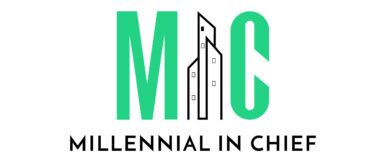The 5 Whys approach is a secret weapon for permanently resolving problems and issues that you face every day. We as busy professionals have a lot on our plates and often resort to a “firefighting” approach to solving problems. Firefighting, is also known as “quick fixes” or putting “band-aids” on problems that typically resolve only the symptom of the problem, not the root cause.
While quick fixes and bandaids are convenient, there is a high likelihood that the same problem will reoccur. More investigation and effort are required to ensure the problem stays resolved.
Speaking of problems reoccurring, how frustrating is it to think you’ve solved one only to have it reappear? When illustrating how to solve problems at the root cause, I use the metaphor of pulling weeds from a garden. When Spring arrives and it’s time to weed your garden, how do you do it correctly? You pull them deep at the root level, not just on the surface.
If you’re pulling weeds at the surface level, I must tell you, you’re doing it wrong! The weeds will return most likely with a vengeance, sprouting additional weeds alongside the originals. The same method of pulling weeds is the right way to solve a problem, at the root and not the surface.
One of the most important and often overlooked steps in permanently resolving a problem is performing a root-cause analysis. There are many different root-cause analysis tools in the lean toolkit and the one I go to first because of simplicity, is the 5 Whys.
Background of the 5 Whys
The 5 Whys approach originated within the Toyota Production System in the 1930s with Taiichi Ono. Taiichi Ono, one of the first creators of the Toyota Production System said the 5 Whys are, “The basis of Toyota’s scientific approach and by repeating “why?” five times, the nature of the problem as well as its solution become clear.”
Toyota and many other organizations with a continuous improvement culture still use it today because it is a simple yet effective method of understanding root causes. It’s also a popular method because it enables critical thinking and collaboration with those affected by the issue.
Identify the Problem
First, start with learning more about the problem you are trying to solve. Understand the current state, determine a target state, and identify the gap between those two states. Once you have identified the gap (AKA the problem), identify the reasons that the gap might exist. Then, implement the 5 Whys to analyze the gap at a deeper level. See the example below:
- Understand the current state: Reports are being delivered late to our customers
- Identify the target state: Reports are being delivered on time to our customers
- Define the gap (AKA the problem): The last report was delivered 3 weeks late to our customer
- Identify what is causing the gap: The budget section of the report was delayed by 3 weeks
How to Apply the 5 Whys Method
The 5 Whys method is as simple as asking “why is that happening” and continuing to ask that questions roughly 5 times until you uncover the real cause. Depending on the nature of the problem, you can do this exercise individually or in collaboration with others. If this problem involves subject matter experts, it’s best to engage them in this exercise.
Ensure to communicate the intent of the questions (learning and collaborating with them to help solve the problem) so it does not feel like an intimidating or punitive exercise. Just a note: depending on the complexity of the problem, you may need to ask “why” either fewer or more than five times to uncover the root of the problem. Here’s an example using the scenario above:
Implement a Countermeasure for the Root Cause
After identifying the root cause, you can begin to creatively think about ways to implement countermeasures to prevent the problem from reoccurring. It is important that during this step you involve the people and stakeholders whom this problem also impacts. Additionally, treat your countermeasure like a test or a hypothesis, your best guess at what you think may fix the problem and prevent reoccurrence.
A potential countermeasure for the example above could be creating an intake process or Project Charter to ensure all initial requirements are captured from the customer. Then, implementing this process as standard work for all new incoming reports so the team is following a consistent process.
You may have noticed that the countermeasure is a “process” driven improvement, not a “person” improvement. If we didn’t keep asking why in the example, it would appear that the finance team member was causing the problem, but it’s clear that they aren’t; there’s a deeper issue.
By addressing the root cause of the problem, not only will the finance team member benefit, but also the rest of the team, as it will be standard process to document requirements at the beginning.
Lastly, it’s best practice to check if you got the results you intended after testing out your proposed countermeasure. Don’t assume that your problem is resolved after you implement your first countermeasure otherwise It could run the risk of reoccurring.
Next Steps
The 5 Whys method is a go slow to go fast method, but you can be assured that this process will significantly decrease the chance of you encountering the problem again.
If you are new to this approach, I highly recommend trying it out in a personal area of your life to get some practice. Some potential problems you may encounter are the electric bill (or any other bill) is too high, you aren’t arriving to work on time, or you are not hitting your weight loss goals.
After getting more comfortable with the approach try it out with some team members at work and continue building your skills. You’ll be well on your way to becoming an expert problem-solver!


